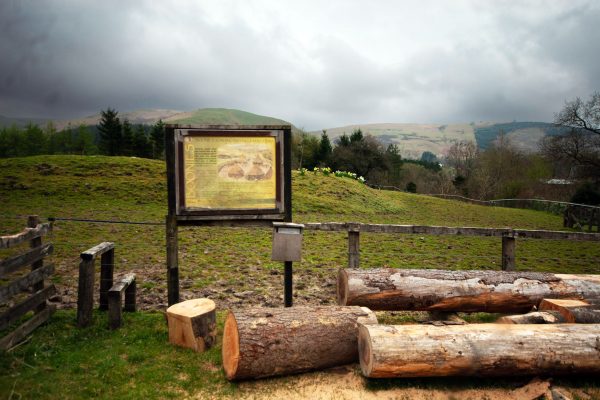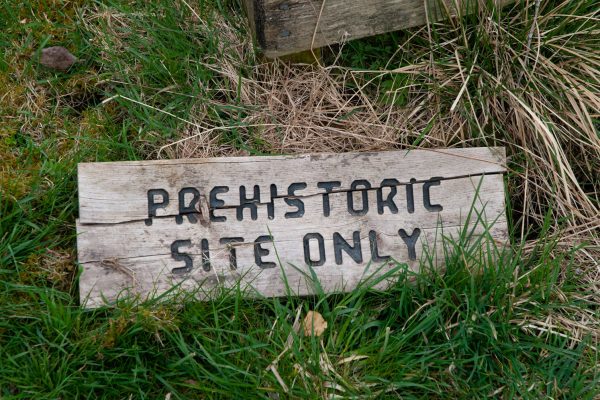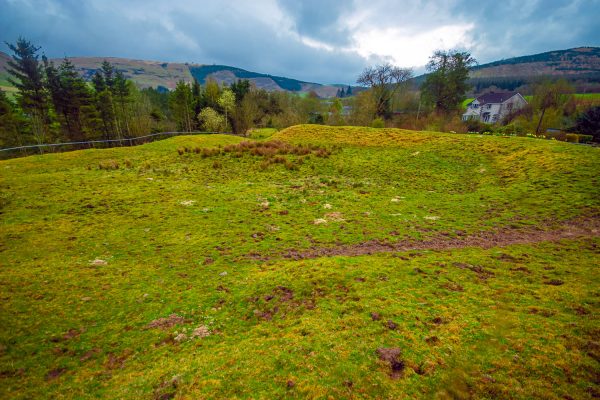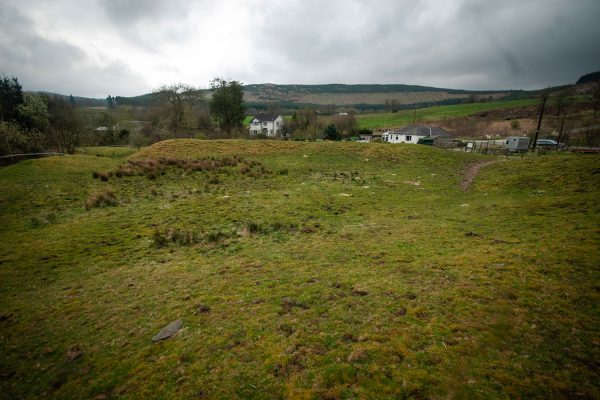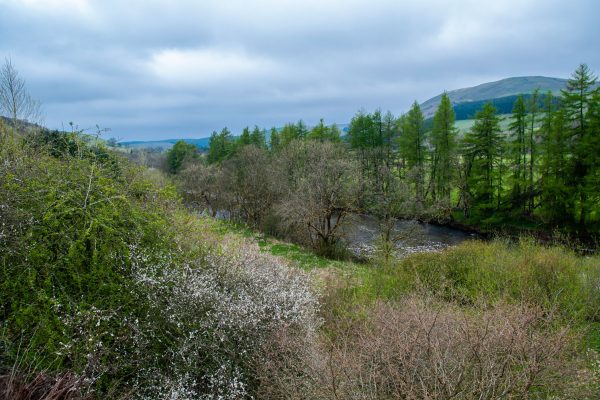Boonies
This Romano-British "defended farmstead" is on the west bank of the Esk.
1. Boonies: A Romano-British farmstead
2. Bailiehill: A Magnificent hill citadel
3. The Knowe: A fortlet, farm or fortified croft
4. Castle O’er: The most superb of the Esk Valley hill forts
5. Over Rig: A unique and perplexing site – fascinating but mysterious
6. Bessie’s Hill: A fort and enclosure
7. The Loupin’ Stanes: A small but impressive stone ring
8. The Girdle Stanes: A large stone ring
9. King Schaw’s Grave: A burial kist, once buried under a vast cairn
It is included in the Prehistoric Trail largely because Professor George Jobey of Newcastle University excavated it in 1973-4 so we know more about it than about similar sites up and down the valley. Boonies gives clues to the everyday life of the people of Eskdale before during and after the Roman invasion.
Walk round the protective rampart. See how, as in many similar enclosures, this one is in the V-angle between the Esk on the far side of the site and the small burn running down to join the river. So if the enclosure was attacked, although it was vulnerable from the NW, it would benefit on two sides from the natural defences of a steep drop down towards the Esk and a lesser slope towards the burn. Such natural defences have clearly been used in other sites in Eskdale, including The Knowe and Bessie’s Hill Fort.
Most obvious from the site plan of Jobey’s excavations are the confusing patterns of the wall-trenches of up to 13 timber round-houses varying from 5.5 to 8m in diameter, representing about seven separate periods of construction. As the original family extended, building next door, and so on, filled the need for more accommodation. The five round-houses of the final phase are shown in colour on the plan. In a late period the yard had been paved with river-worn flat stones under which a drain was found near the entrance.
The enclosing earthwork was probably from one of the later periods of habitation, perhaps around the first century AD. Was this to protect against Romans? Probably not; even a small military contingent of Romans would have no difficulty in overthrowing the defences of such a small settlement. The more likely reason was to offer some protection against local gangs and tribes. It seems that rapid population growth and land-hunger occurred in the last two or three centuries before the Romans. Border reivers have a long history.
Later still, defensive enclosure had again become unnecessary. This is shown by one of the later roundhouses being built over the levelled-down rampart. These later farmers felt safe enough to do without a rampart: this might have been due to the pacifying presence of the Romans, but perhaps more likely to the protection afforded by a powerful overlord.
Entrance to the enclosure was by a ‘lift and place’ gate rather than by a swing gate, in the SE corner. This led to the paved yard, and there were paved approaches to the huts – if you’ve camped in wet weather you’ll know why.
Finds at excavation were scanty and included a rotary quernstone, a brooch in the form of an almost complete ring , a fragment of a white glass beaded bracelet and shards from a Roman flagon. Carbon-dating from carbonised wood gave a date of 76 – 327AD.
The extended family living in Boonies were what we’d now call small farmers or crofters, whose principal activity would have been rearing animals, mainly sheep and cattle. Between themselves, family members had to have all the skills needed for survival. These would have included stock rearing, food storage, making cloth, treating animal skins, making and replacing tools and building and maintaining Looking across the enclosure from the entrance their huts. Hunting animals and birds along with fishing would have brought fresh items into their diet. They may have produced their own pottery.
How did our Boonies family view themselves? As independent from any local ruler, or as relatives of the powerful inhabitants of nearby hill forts and larger settlements? Did they see the Romans simply as another type of ruler to be appeased or as an unwanted invader? Perhaps the Romans brought benefits to Eskdale. Or did armed forces crossing and re-crossing the area make intolerable demands on the family’s resources? How did their life change under Roman rule?
We may ask ourselves these questions as we walk round Boonies, but as yet can only guess at the answers!




